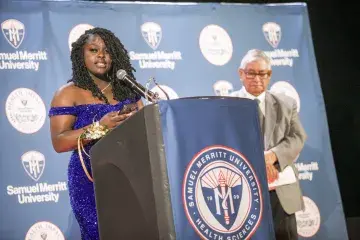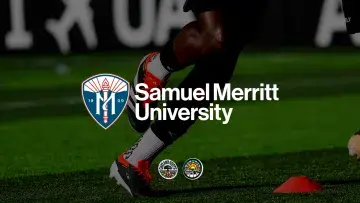Professor Finds Origin of Today’s Pharmaceuticals in 1906 Drug Kit
A casual visit to the Jack London State Historic Park led to a yearlong research project for Samuel Merritt University Associate Professor Richard Rocco, PhD, after he came across a medication travel kit belonging to the famed author that piqued his curiosity.
Rocco was strolling through the displays in the Jack London House of Happy Walls Museum, housed in a stone house near Glen Ellen in Sonoma County, when -- among the writer’s first-edition books and other mementos -- he noticed a small, black leather case containing two rows of vials dating back to 1906. The 22 vials held pills of different shapes and colors, and were covered with fading labels – some printed and others handwritten.
“It was interesting,” Rocco recalled thinking. “What are these drugs? Are we still using them?”
Rocco, who teaches in SMU’s Department of Basic Sciences and earned his doctorate in pharmacology/toxicology, has long been interested in the history of medicine and drugs, often including that background in his lectures. What he didn’t know was what types of drugs people were taking to treat their ailments at the turn of the century.
And aside from reading one of his books in high school, Rocco says he previously knew almost nothing about London either. Through some early research, Rocco learned that London, the author of more than 50 books including Call of the Wild and The Sea Wolf, often mentioned the names of drugs in his writings.
Soon after returning home from his trip, Rocco wrote to the museum curator asking if he could study the kit. Once he gained permission, museum workers unscrewed the door of the glass display cabinet -- for the first time in more than 30 years -- to remove the clamshell case so Rocco could catalog and his daughter, Denise Rocco-Zilber, could photograph the drugs inside.
The museum claims the travel kit was from the Snark, the ship that London built to sail around the world and serialize his adventures.
Because the author’s drug kit was made by Squibb, Rocco bought a 1906 catalog from the pharmaceutical company through eBay. The $10 purchase proved crucial to uncovering the formulation and clinical use for each of the 14 clearly labeled medicines in the kit.
Among the drug formulations Rocco found were the precursors for Aspirin and Tylenol.
“I expected that in 1906, they would have nothing that we have today,” said Rocco.
Another popular over-the-counter drug of that time were Cocaine Drops, advertised with a colorful picture of children playing in a garden. Over the following century, all local anesthetics were developed from cocaine, including the brand drug Lidocaine.
Rocco also discovered that several of the bestselling drugs of the era contained opium, including “Dover’s Power” to treat diarrhea that also contained ipecac to induce vomiting in case a patient overdosed by taking too many of the pills. Another was labeled “Terpin Hydrate & Heroin,” a combination cough suppressant and expectorant -- akin to modern-day Robitussin.
Rocco’s research inspired him to learn more about London. He has two papers being published this summer in periodicals about the author; one that disputes the belief that London suffered from vitamin deficiency and was the cause of his ill health that cut short his overseas adventures, and another about the author’s experience with anti-immigrant sentiment against the Japanese in the early 20th century.
“He’s not my hero, but I have found some of the things he’s done to be interesting and timely,” said Rocco.
Photo credit: Denise Rocco-Zilber


